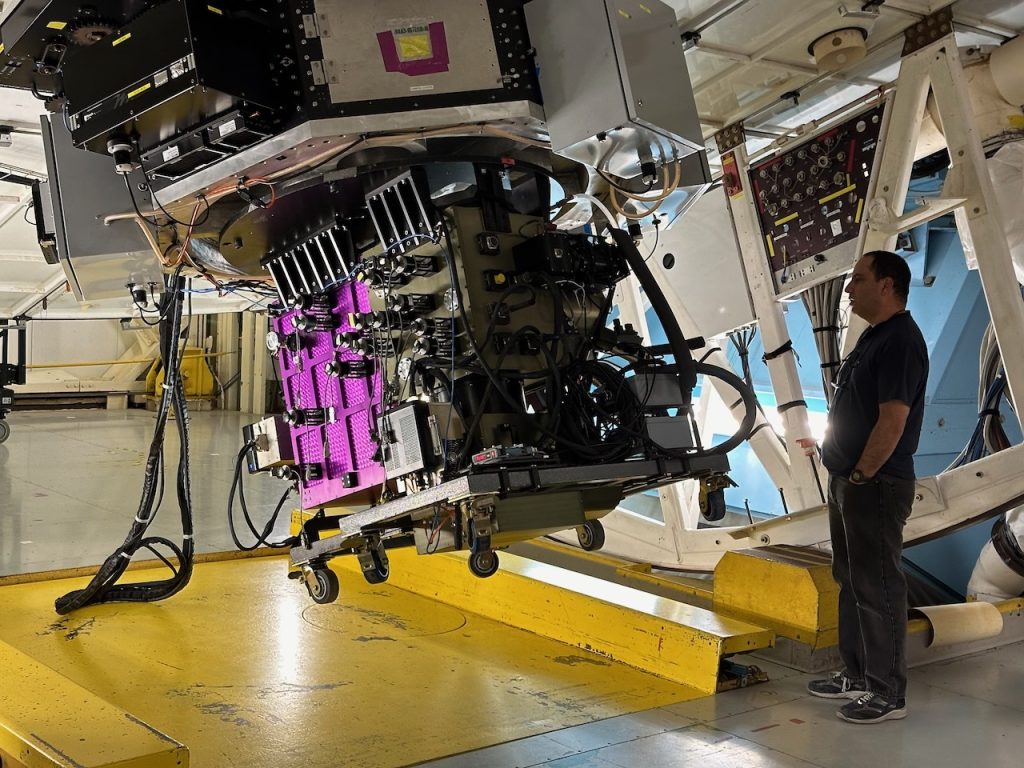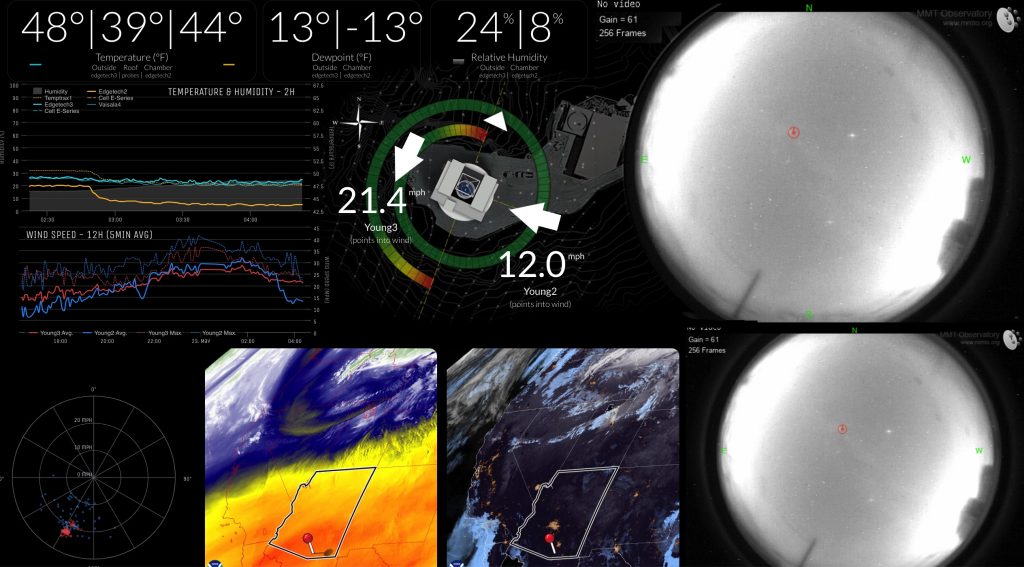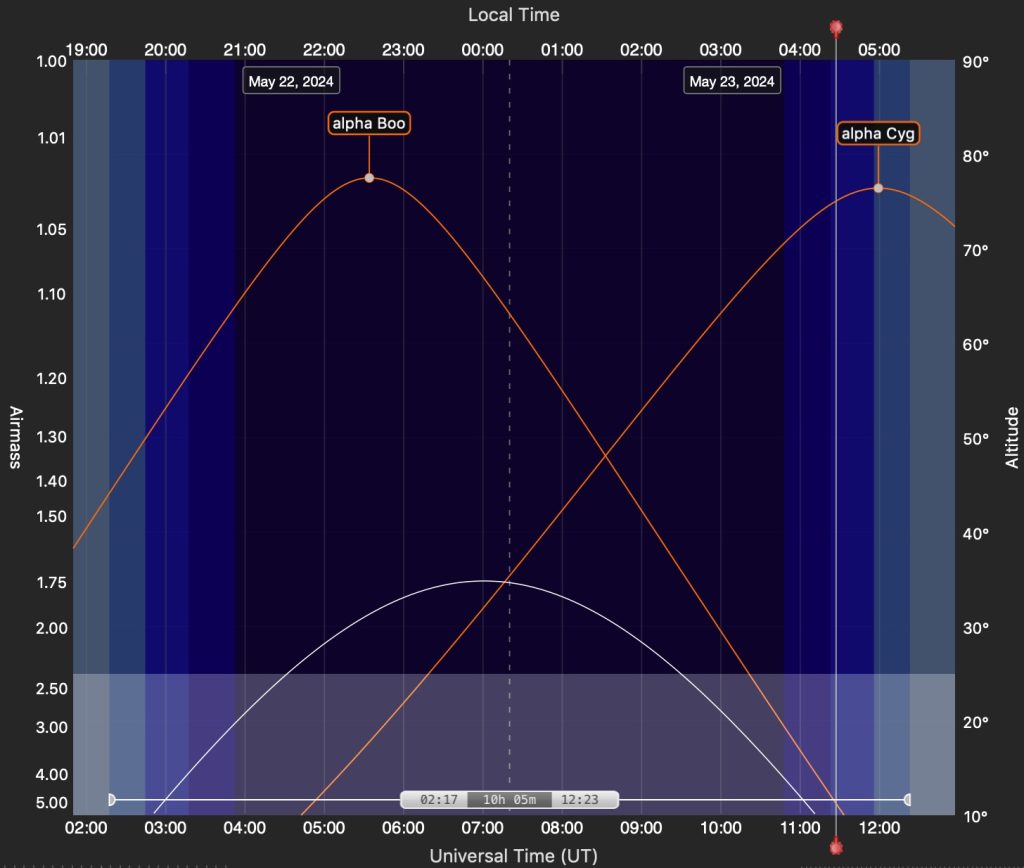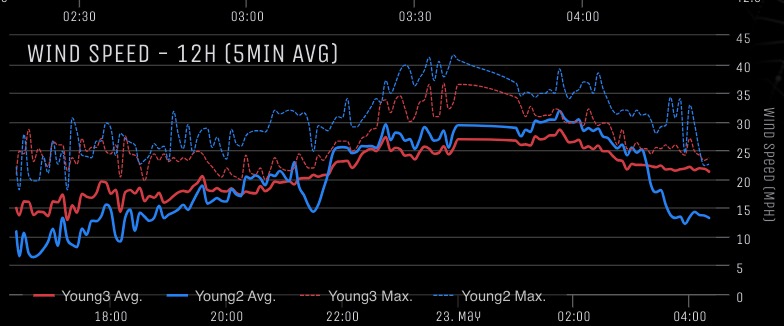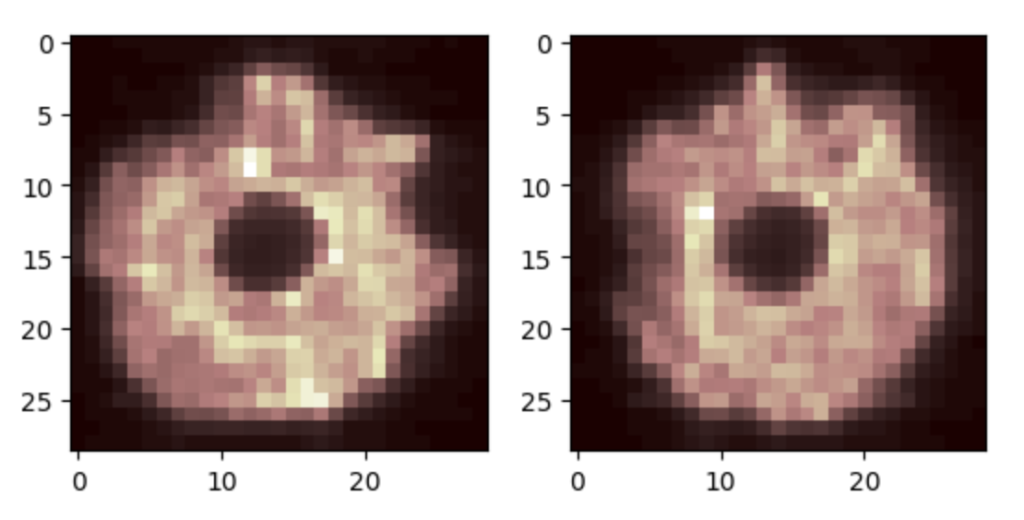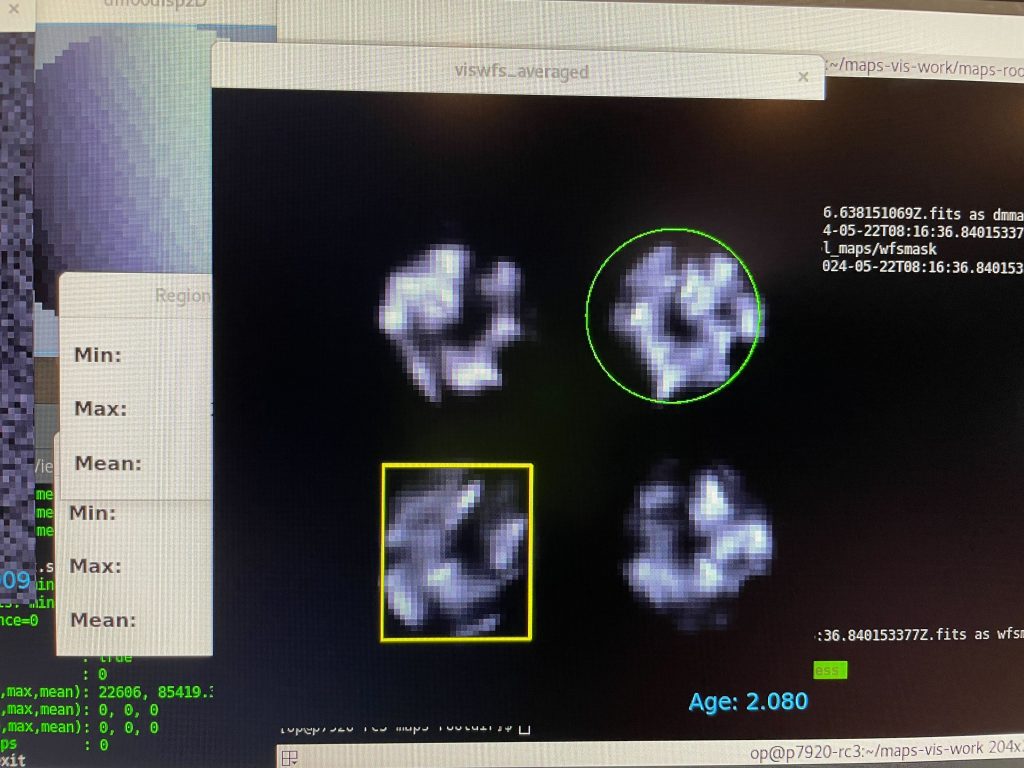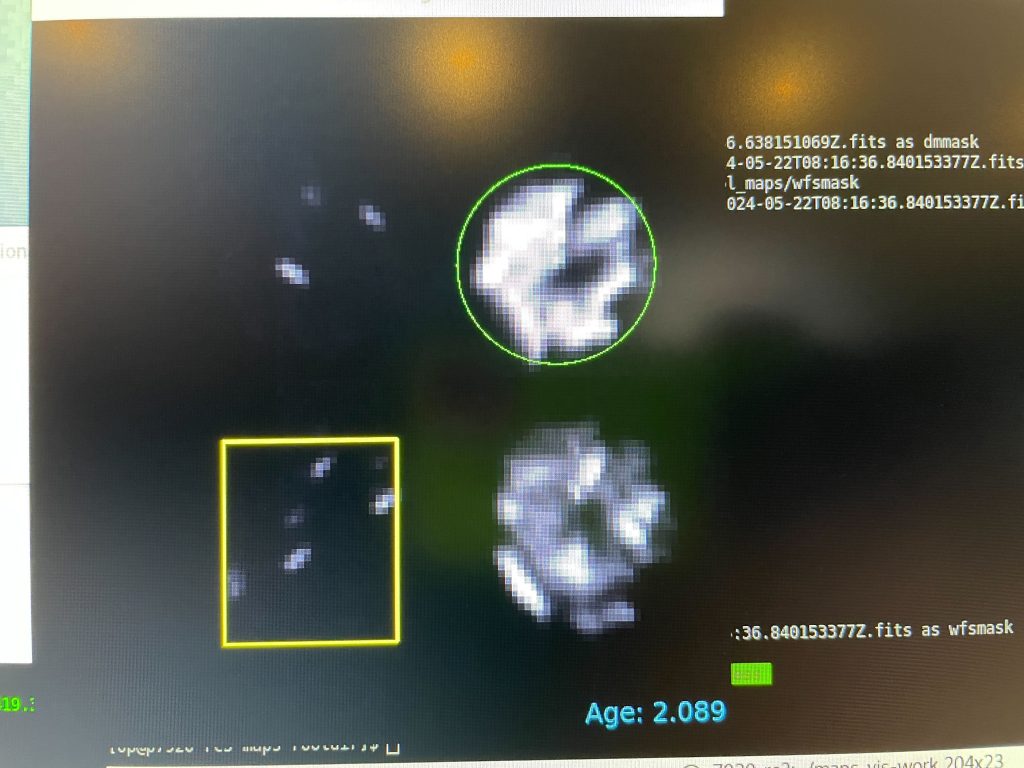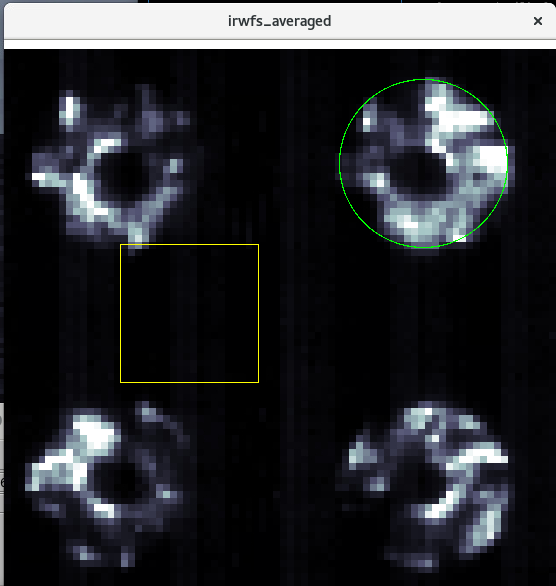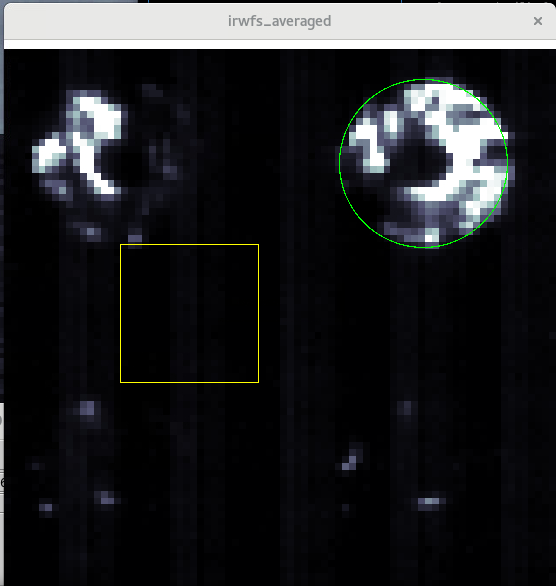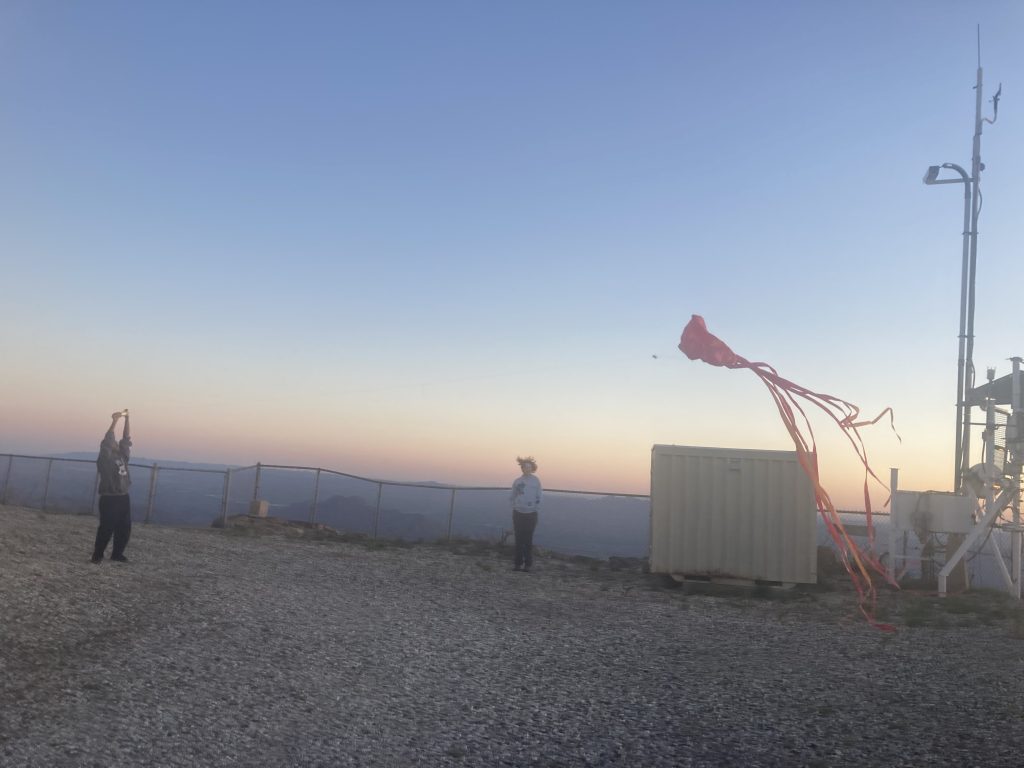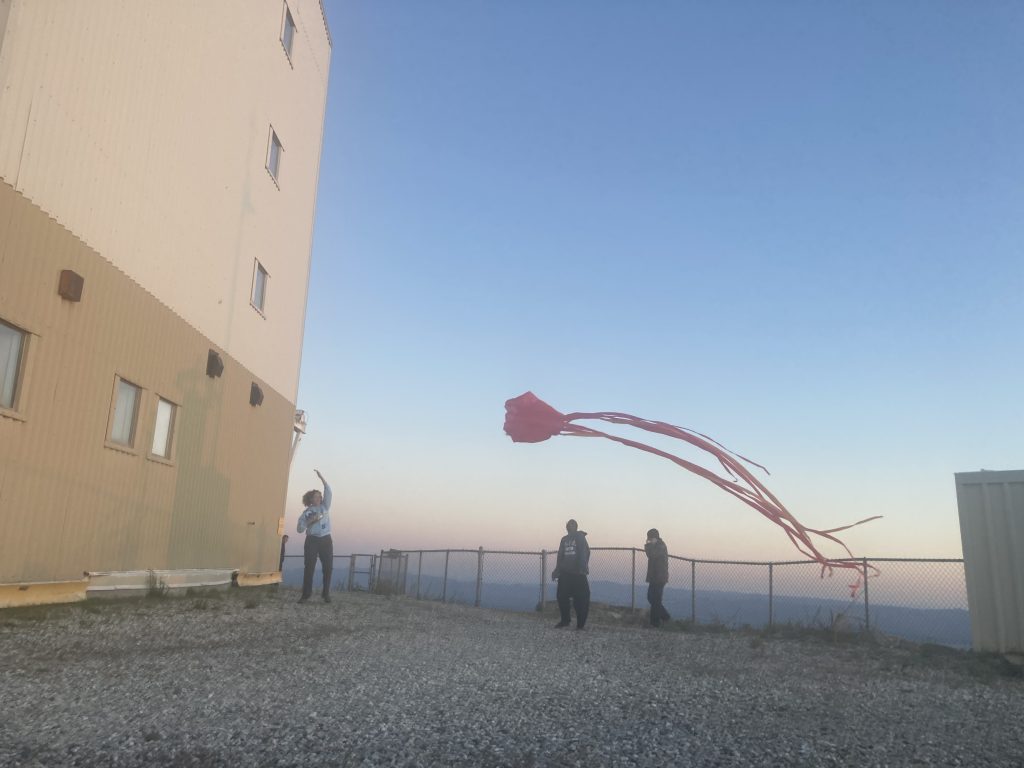Today was the first day of the conference and my talk: “Commissioning MAPS, the MMT AO exoPlanet characterization System.” It went pretty well and it’s also nice to be done with that right at the start of the week! There were a few MAPS-ers in the audience and here’s a photo by one of them, Suresh:

Meanwhile back at MMTO, Brian had a message from Tim that it would be better to take the large tens-of-arcseconds mount offsets and offload them to the hexapod with zero-coma offsets. After he did that the team tested whether the star was still on the chief ray by rotating the instrument and watching it on ARIES — and it was good!
Oli came up tonight and he and Grant put in the ZWO pupil-imaging camera and did the same test we did yesterday to check if offsetting the star shifted the pupils, meaning they are mis-conjugated. However, they only saw a quarter of a pixel shift, or about 5um, which is about 2um out of tolerance (3um tolerance) and still close enough.
Suresh is also observing remotely from Japan and was in communication with the team about the IR camera weirdness from yesterday — the pressure seems high (or the reading is off), and/or the camera isn’t cool enough — so we turned it off for now and will pump on it all day while sleeping. Before that Grant/Oli/Manny went up to check the seating of the fibers in the Top Box.
Finally we tried to do some CACAO and began working our way through a few software bugs. We realized we needed Jared’s help with the pseudo inverse but he was at the conference reception.
We also started looking at our pupils more and decided to explore the alignment and pupil conjugation further. Oli and Grant tried adjusting the negative lens between the pellicle and pyramid. But even with 3 turns and almost all the way off, there was no noticeable difference in the pupil images:
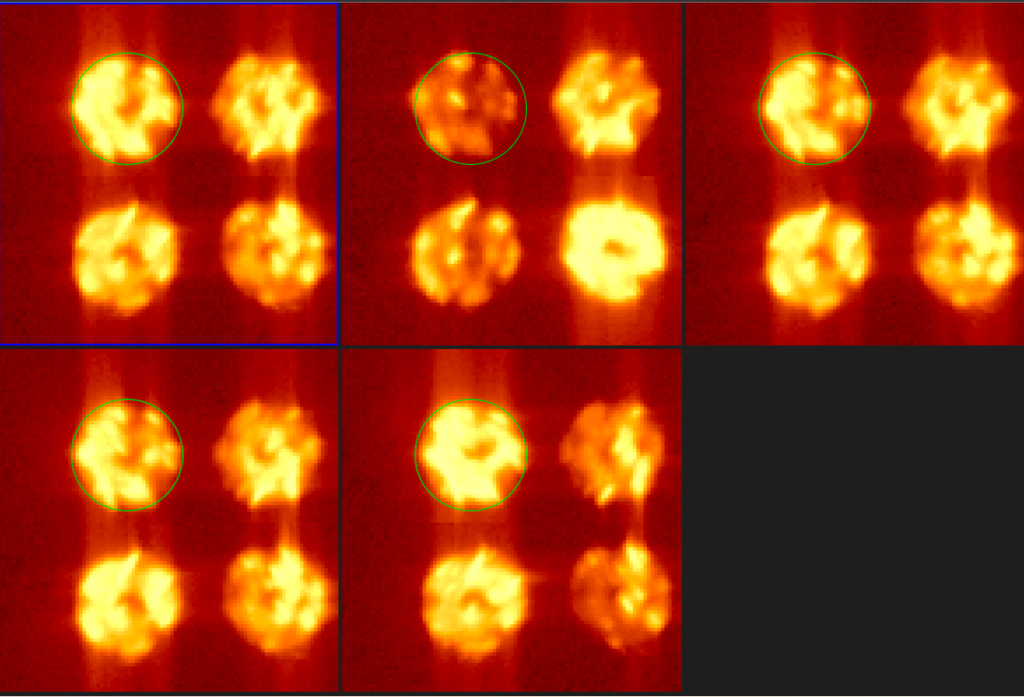
But isn’t it strange that they still look so raggedy, and we can’t even see the spiders? We were wondering about this. So we decided to try and make something even more obvious to see. Some kind of a sharp edge. Shall we say a knife edge.
So we asked Brian to partially obscure the pupil by putting the primary mirror cover tarp about 1/3 of the way across. And here are the pupil images after this. First the ZWO:

Which looks a lot like ARIES in K-band:

And finally the Vis WFS pupils:
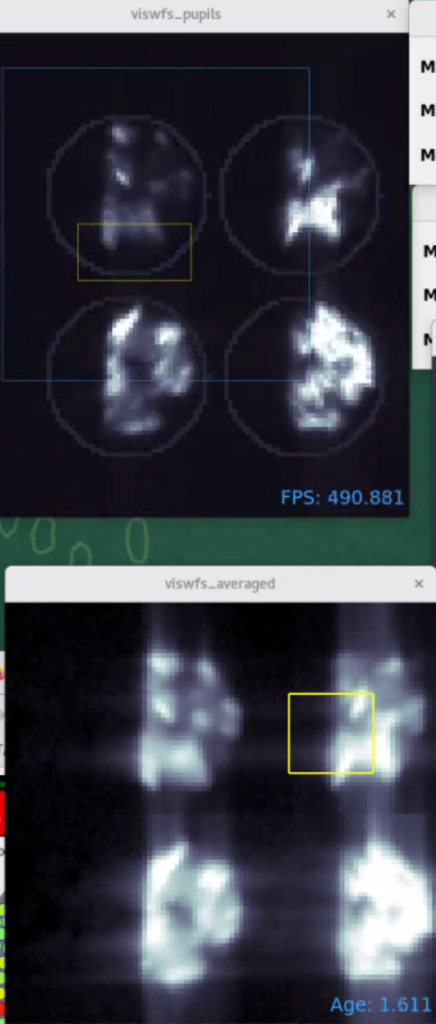
They all have a sharp knife edge from the primary mirror cover tarp. But the central obscuration is fuzzy on the Vis, whereas it is sharp in both ZWO and ARIES. And another curious thing is that the IR pupils have a sharper central obscuration.

It was about dawn and our brains were tired, so we will explore this a bit more tomorrow night. But it is curious that we can get a sharp knife edge on the Vis pupils but not a sharp central obscuration. Furthermore it is curious that the IR pupils did have a sharper central obscuration (last run).
The word of the night is Santoku. “Santoku means ‘Three Virtues’ or ‘To solve Three Problems’. The three virtues are meat, fish and vegetables, or slicing, dicing and mincing depending on your interpretation. This means that the Santoku is an all-around knife, suitable for the amateur home cook and the professional chef alike.” [source]

